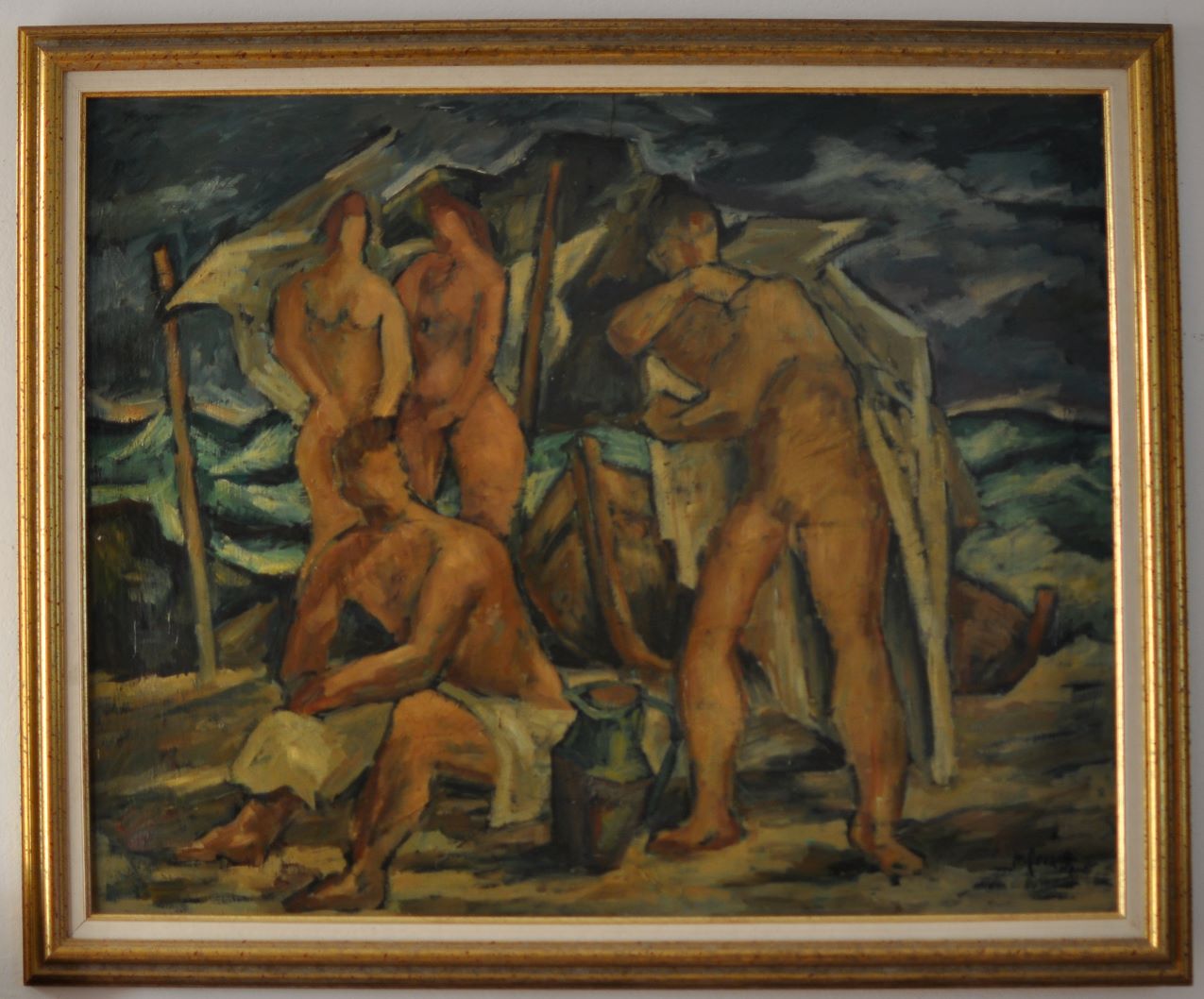Mario Ferretti, a prominent figure in Livorno’s artistic landscape during the 1930s and beyond, showcased remarkable maturity in his paintings. While Livorno is renowned for its rich artistic heritage, it’s crucial to acknowledge Ferretti’s contribution beyond the celebrated achievements of Italian art in the 19th century. His exploration of urban peripheries, infused with a somewhat “metaphysical” essence, reflects a departure from traditional local styles akin to contemporaries like Ghigo Tommasi and Voltolino Fontana.
Ferretti’s artistic journey took various turns, from graphic interpretations of the old city to restrained colour palettes in the 1940s and eventually to abstract works in the 1950s. Ferretti’s commitment to figurative expression remained steadfast despite a prolonged creative hiatus. Critic Curzio Malaparte aptly described Ferretti as a “purely plastic artist,” orchestrating subjects to achieve maximum dramatic impact.
One of Ferretti’s most poignant works is the Via Crucis, adorning the church of San Giovanni Bosco in Livorno. Here, the plasticity of figures intertwines with aesthetic discourse, evoking profound solemnity akin to Jacques Maritain’s notions of the sacred. Ferretti’s sensitivity also found expression in poetry, revealing introspective depths often overlooked.
Ferretti’s homosexuality, subtly encoded in his representation of nudes devoid of distinct gender attributes, underscores a poignant narrative of persecution during the fascist regime. In works like “Solo Ariano,” mandated by the regime but subversively depicting blue, featureless figures, Ferretti navigates the dangerous landscape of enforced norms, subtly alluding to the castration of non-conformity.
Through his art, Ferretti depicted the world around him and articulated his personal struggles and societal injustices, offering poignant commentary on the human condition.
Mario Ferretti’s artwork stands as a poignant testament to the resilience and defiance of individuals oppressed by fascist regimes. Ferretti masterfully encapsulates the horrors of persecution and the struggle for identity and freedom amid oppressive regimes in his painting.
The depiction of faceless, genderless figures symbolises the universal human experience, transcending distinctions of gender and sexual orientation. The fascist symbol, the axe attached to the fasces, becomes a tool of violence not only against individuals but also against their very identity and freedom of sexual expression.
The grotesque hand, coloured in shades of hope and despair, represents the oppressive power of the non-Aryan, representing evil, seeking to suppress all forms of diversity and non-conformity. Symbolically, it signifies the mutilation of sexuality, reflecting the persecution endured by homosexuals during the fascist regime. This portrayal not only represents physical violence but also the violation of fundamental human rights and the denial of individual dignity.
Through his art, Ferretti boldly denounces the persecution faced by homosexuals under fascist rule, shedding light on the pain and suffering inflicted by the denial of one’s identity and the coercion to conform to oppressive norms. His painting becomes a powerful act of resistance and testimony against the injustice and brutality of totalitarian power, reaffirming the dignity and validity of homosexual experiences within society.
The fact that Ferretti, himself a homosexual, was compelled to paint a piece intended to exalt the Aryan race stands as a silent act of resistance and protest against the persecution and discrimination faced by himself and his community. The inclusion of the witch-like hand, possibly a remnant of Catholic culture condemning homosexuality as a mortal sin, adds another layer of complexity, reflecting Ferretti’s internal struggle with his faith and sexual identity.
In this light, Ferretti’s painting transcends mere artistic expression; it becomes a potent instrument of resistance and defiance, a profound exploration of identity, and a stark reminder of the enduring human spirit in the face of intolerance and persecution. Ferretti’s legacy serves as a beacon of courage and resilience, inspiring future generations to confront injustice and champion the rights of all individuals, regardless of sexual orientation or identity.
